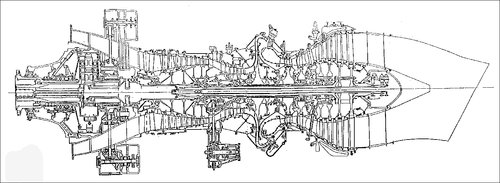I find it fascinating how fast the Germans ditched centrifugal for mostly pure axial designs and I wonder how it played into thrust performance at higher speeds despite early British centrifugal engines having a clear sea level static thrust advantage. Aside from obvious frontal drag of centrifugal engines, the Germans knew where turbine engines needed to go to achieve higher speeds and save weight as engine sizes scaled up.
The Brits developed the axial flow gas turbine during WW2 ref the Metropolitan-Vickers F2 which first ran in 1941. It first flew in the Gloster F9/40 DG204 on 13 Nov 43 in underwing pods very similar to the Me262. Its thrust to weight was in excess of the both the Jumo and BMW engines. It went on to be the genesis of the Sapphire and larger Avon’s.
The reason why it didn’t make it into WW2 was Metropolitan-Vickers, in particularly there thermodynamic/Aerodynamic experts were heavily committed to an even made important project, development of the worlds first Uranium Isotope separation plant, which was delivered to the MS Factory Valley (P6), located near
Rhydymwyn, in Wales during 1942. Industrial size Uranium isotope separation by gaseous diffusion is in essence a large capacity pump/compressor or series of. After this, despite a brief burst of gas turbine work which saw the F2 developed into a multi shaft turbofan (known as the F3) . The team relocated to the US, I think Boston early 44, to support the development of the equipment which went into Oak Ridge as part of the Manhattan Project.
So German gas turbine strategy got axial flow into squadron service, whilst Brit gas turbine strategy got centrifugal flow into squadron service and enough HEU for an atomic bomb.


